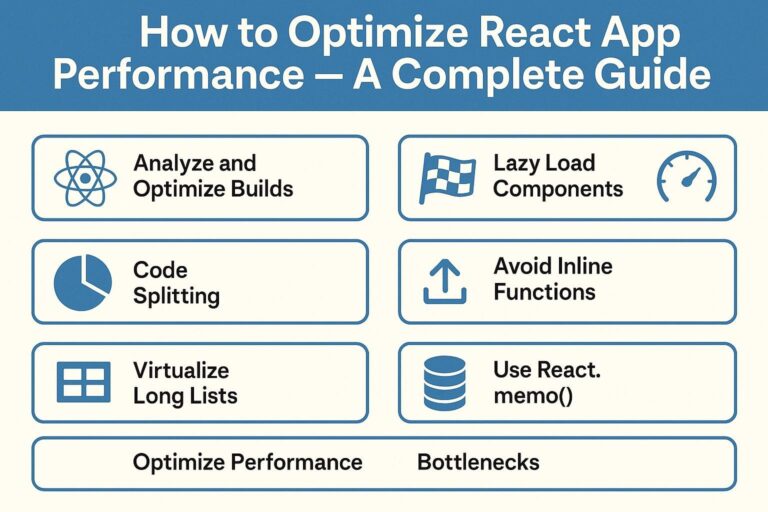
Artificial Intelligence (AI) has evolved significantly in recent years, revolutionizing how we interact with technology. With the rise of large language models (LLMs) like OpenAI’s ChatGPT, Anthropic’s Claude, and Google’s Gemini, users can now engage with AI in natural language to solve problems, generate content, write code, and more. However, the effectiveness of these models largely depends on one critical factor: the prompt.
A well-crafted prompt can make the difference between a vague, generic response and a highly relevant, accurate, and useful one. This process of designing and refining prompts is known as prompt engineering. In this article, we explore what prompt engineering is, why it matters, and how to master it to get better results from AI models.
What Is Prompt Engineering?
Prompt engineering refers to the practice of constructing and fine-tuning input queries (prompts) to achieve optimal outputs from AI models. Since LLMs interpret language probabilistically and lack a deep understanding of intent, the wording, structure, and context of a prompt heavily influence the quality of the response.
Prompt engineering involves not just asking questions but guiding the model to produce the desired output by providing it with context, instructions, format expectations, examples, and constraints. It is a vital skill across industries, especially in roles involving content creation, software development, data analysis, education, customer support, and automation.
Why Prompt Engineering Is Important
While AI models are capable of handling complex queries, they are only as effective as the instructions they are given. Poorly framed prompts often lead to:
- Incomplete or irrelevant responses
- Hallucinated facts or misinformation
- Inefficient use of resources (e.g., API tokens or compute time)
- Misinterpretation of user intent
- Unusable or low-quality output
By contrast, well-engineered prompts can significantly enhance:
- Accuracy and reliability of responses
- Efficiency in completing tasks with fewer iterations
- Creativity and coherence in generated content
- Alignment with business goals and user expectations
- User satisfaction in chatbot or customer-facing applications
Key Principles for Writing Better Prompts
1. Be Clear, Concise, and Specific
Avoid ambiguity. State exactly what you want the model to do. Use direct, descriptive language that leaves little room for misinterpretation.
Poor Example:
“Tell me about AI.”
Improved Example:
“Write a 300-word summary explaining the difference between supervised and unsupervised learning in AI, including at least one real-world example for each.”
2. Add Sufficient Context
Providing relevant background information helps the model tailor its response to the correct audience or objective.
Example:
“You are a hiring manager drafting a job description for a remote frontend developer with React, Redux, and TypeScript experience. Include soft skills, technical requirements, and the company’s remote work policy.”
3. Define the Output Structure
If you have a preferred format—whether paragraphs, lists, tables, code snippets, or markdown—include those instructions in your prompt.
Examples:
- “Summarize the key differences in bullet points.”
- “Generate a Python function with inline comments.”
- “Provide a comparison table with three columns: Feature, ChatGPT, Claude.”
4. Break Down the Task into Steps
For complex tasks, use a step-by-step breakdown. This reduces cognitive load for the model and increases clarity.
Example:
“Step 1: Extract five key statistics from the article.
Step 2: Summarize each in one sentence.
Step 3: Provide one actionable insight based on each statistic.”
5. Provide Input Examples
If you’re asking for a specific type of output or language style, show what you expect with one or more examples.
Example:
“Convert the following to passive voice.
Example: ‘The company launched the product’ → ‘The product was launched by the company.’
Now convert: ‘The manager praised the team.'”
6. Assign Roles or Personas
Framing the model with a role can drastically influence tone, content depth, and focus.
Examples:
- “Act as a financial advisor helping a beginner plan for retirement.”
- “You are a UX designer reviewing a mobile app interface for accessibility issues.”
- “Pretend you are a college professor explaining neural networks to undergraduates.”
7. Use Constraints and Guidelines
Impose constraints such as word limits, format rules, or stylistic preferences to guide the AI’s output.
Examples:
- “Write in under 150 words.”
- “Avoid technical jargon and explain in simple terms.”
- “Use only real data from 2022 where applicable.”
8. Iterate and Test Variations
Prompt engineering is often iterative. If the first attempt does not yield the desired result, adjust the structure, add context, or rephrase. Test multiple versions to see what works best.
Advanced Prompting Techniques
Few-Shot Prompting
In few-shot prompting, you provide a few examples of inputs and outputs to help the model understand the expected pattern or logic.
Example:
“Translate the following English words to Spanish:
- Hello → Hola
- Thank you → Gracias
- Please → Por favor
Translate: ‘Good night’ →”
Zero-Shot Prompting
This approach assumes the model can perform the task based on a single, well-phrased instruction without any examples.
Example:
“List five pros and cons of using remote teams in software development.”
Chain-of-Thought Prompting
This technique encourages the model to reason step-by-step before arriving at an answer, which is especially helpful in logical, mathematical, or multi-stage problems.
Example:
“A train leaves Station A at 2 PM going 60 km/h. Another train leaves Station B at 3 PM going 80 km/h. When will they meet? Show your reasoning before giving the answer.”
Common Use Cases Where Prompt Engineering Matters
Content Creation
- Generating blog posts, product descriptions, social media content, scripts, and summaries.
Programming Assistance
- Writing or debugging code, converting between languages (e.g., Python to JavaScript), documenting functions, or optimizing algorithms.
Data Analysis and Visualization
- Generating Python or SQL queries, interpreting data trends, explaining graphs, or creating reports.
Educational Support
- Creating quizzes, flashcards, study guides, or simplified explanations for complex topics.
Business Communication
- Drafting professional emails, proposals, meeting summaries, pitch decks, or client documentation.
Research and Analysis
- Summarizing papers, extracting insights, generating literature reviews, or formulating hypotheses.
Tools and Platforms for Prompt Engineering
- PromptPerfect: Optimizes prompts for better performance across different models.
- Promptable: Helps create, store, test, and refine prompts.
- OpenAI Playground: Useful for live testing with GPT models.
- Anthropic Console: Interface for experimenting with Claude-based prompts.
- GitHub Repositories: Explore open-source prompt libraries such as
awesome-chatgpt-prompts.
Best Practices to Keep in Mind
- Begin with a clear objective for the task.
- Keep prompts concise but informative.
- Avoid redundancy or contradictory instructions.
- Monitor token usage in API environments to optimize cost and speed.
- Use temperature and max token settings (if available) to control creativity and length.
- Store successful prompts for future reuse or automation workflows.
- Regularly experiment with rephrasing, examples, and formatting to improve results.
Final Thoughts
Prompt engineering is becoming a foundational digital literacy skill. As AI becomes more integrated into professional workflows, those who can communicate effectively with language models will hold a distinct advantage. From developers to marketers to analysts, everyone benefits from learning how to instruct AI systems more precisely and creatively.
A well-written prompt not only saves time but also produces higher-quality outcomes. Whether you’re automating tasks, generating insights, or developing applications, mastering prompt engineering is essential to working smarter with AI.

I’m Shreyash Mhashilkar, an IT professional who loves building user-friendly, scalable digital solutions. Outside of coding, I enjoy researching new places, learning about different cultures, and exploring how technology shapes the way we live and travel. I share my experiences and discoveries to help others explore new places, cultures, and ideas with curiosity and enthusiasm.






